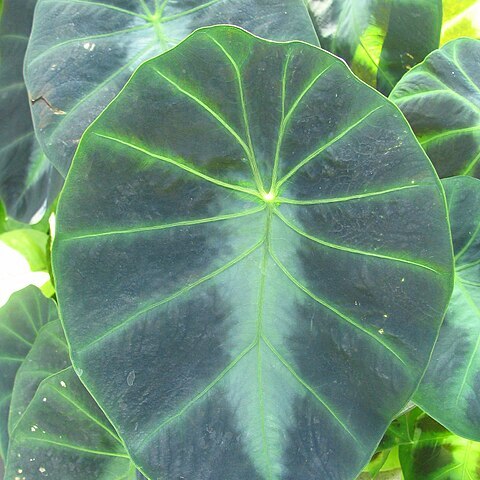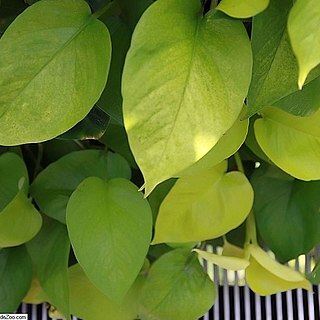Herbs, perennial, terrestrial, with stolons and tubercles. Stolons trailing horizontally, pale green, thin, 3.7-40 cm × ca. 4 mm, branched; internodes cylindric, 2.7-9 cm, with tubercles; tubercles triangular or ovate, ca. 2 cm in diam. Leaves 3-7; petiole light green or greenish white, without transverse purple lines, cylindric, 20-45 cm; leaf blade pale green abaxially, green or light green adaxially, with 4-6 pairs of large purple spots (lighter when growing in a very shady environment), peltate, ovate-cordate, (5-)16-21 × (4.7-)13-16 cm, membranous; primary lateral veins in 3 or 4 pairs, marginal veins inconspicuous. Inflorescences 1-3; peduncle pale green, cylindric, much shorter than petioles, 6.4-15 cm. Spathe constricted; tube convolute, green, almost cylindric, 1.3-2.7 × 0.6-1.8 cm; limb usually reflexed at anthesis, yellow, greenish white, or yellowish, oblong-lanceolate, 4.2-7.8 × 1.6-3.3 cm. Spadix sessile, shorter than spathe; female zone cylindric, short, 0.9-1.7 cm × 3-8 mm; female flowers green; ovary ovoid; ovules ca. 30; funicle long; placentae parietal; stigma sessile; sterile zone absent between female and male zones or cream-colored, 0.5-0.8 cm × 0.8-2 mm; male zone yellowish, pale pink, or cream-colored, 1-1.7 cm × 2.5-5 mm; male flowers 6-8-androus; stamens connate into a synandrium, yellow; appendix reddish purple, greenish white, or light yellow, cylindric in proximal part but conic in distal part, 1.7-5.1 cm × 1.5-6 mm. Young berry green. Fl. Jun-Aug, fr. Jul-Oct. 2n = 28.
More
A taro like plant. It is a herb. It has trailing stolons. These are pale green and thin and can be 4-40 cm long. The leaves are oval with purple marks between the veins. There are 3-7 leaves. The leaf stalk is 20-45 cm long and cylinder shaped. The leaves are oval or heart shaped and 16-21 cm long by 13-16 cm wide. The leaves often have 4-6 pairs of large purple spots. The flowers are slender and yellow.


